George Murray Brown
(8/23/1843 – 10/9/1919):
The Last Ohio Sheriff To Oversee A Public Hanging
- as told by Carol Lynn Agnew Tallman
Growing up as a young girl my parents often traveled to Bowling Green to visit my mothers’ parents and grandparents especially on holidays. I spent weeks each summer with my grandparents and great-grandparents who always made me feel special. My parents were married in the formal garden at George and Lucy’s estate. Great grandma Buffie died in 1956, but, I still remember vividly both her and the stories she told of growing up with her dad, the sheriff, and times spent in the jail where they lived during his terms of office. She said it was very interesting having supper with the prisoners. She loved to crochet and mastered the art of tatting. I would spend days exploring the attic and asking lots of questions, the attics library held wonderful books, enough to keep a young girl busy. George Murray Brown was born in Decatur, Otsego County, New York the third child of Joseph Brown and Cynthia Jones. His siblings were Paul born 1837, Paulina 1840, Banyer Blakely 1845 and twins Gibson Lamont & Gibbs F. in 1847. Joseph and his family removed to Perrysburg township, Wood County, Ohio in 1856 and in 1858 to Bowling Green in Plain township. It was said that he was both well acquainted with Andrew Jackson of whom he was a personal friend and a Democrat of the old school. Cynthia died 16 March 1880 and Joseph on 14 November 1892 at the home of his son George in Bowling Green.
George or “Murr” to his friends attended school in Perrysburg until 1858, after which he came to Bowling Green completing it and entered farming. By the fall of 1863 the Union Army had won impressive victories including Gettysburg, Vicksburg and throughout Tennessee. Like many other young men of the north who were now seeing signs of the wars end; George joined a group of men in Bowling Green that formed Company “C”, a part of the 64th Battalion. Later the 64th would merge with the 19th to form what would become the 144th Infantry Regiment or Ohio National Guard. Governor John Brough wanted these battalions to remain on the home front but, had to work out a deal with Secretary of War Stanton to have them serve their 100 days duty acting as rear guard. The battalions mustered in on May 11, 1864 at Camp Chase, Ohio and were quickly united into the 144th Infantry Regiment. The Regiment moved by train arriving at Fort McHenry on May 15th to relieve regular troops which were immediately sent to the front. Acting as rear guard for the Washington area and guarding Rebel prisoners at the fort; the 144th was sallied forth when Confederate General Jubal Early threatened Washington. The regiment took part in the July battle of Monocacy just outside of Frederick, Maryland (a Confederate victory but also a fight that potentially saved the capture of Washington) then in August the disastrous Berryville Wagon Train Raid in Clarke County, Virginia.
At Monocacy Maj. Gen. Lew Wallace commanded 6500 men with a large number being “Hundred Days” men; eventually Gen Ricketts reinforcements helped put an end to the battle. The 144th’s role started the 9th located on the east side of the Monocacy River at the foot of Reich’s stone bridge. Shortly before noon they were ordered across and up the hill under bayonets to charge the 4th Georgia commanded by Col. Phillip Cook. The 144th, commanded by Capt. Edward Leib was at first pushed back to the bridge, but, quickly ordered to charge back again. This time, after the 4th fired they turned and ran northwest towards the Pike. Around three in the afternoon, Early redoubled his efforts and the 144th now heard steady fighting approaching them. Ordered to hold the bridge to the last, they were able to do so till about five pm. Now under the heavy attack of Cook’s Georgia Brigade and Cox’s North Carolinians they retreated back across the river heading towards New Market along the Baltimore Pike. With the Rebs in hot pursuit, many in haste threw away knapsacks, weapons and other accoutrements to make their getaway. By days end the victorious Rebel’s lobbed a few shells at the fleeing troops, but, were too exhausted to pursue. The 144th’s loss that day was 4 killed, 15 wounded and 28 captured (1).
The first of August Grant put Sheridan in command of the Middle Military Division. Sheridan spent the first week at Harper’s Ferry arranging his Army of the Shenandoah. August 10th they moved out in search of Early’s Army, leaving the 144th behind over the uncertainty of their term of service. They learned the morning of 12th they were to act as rear guard of a wagon train numbering 525 that supplied Sheridan’s Army bound for Winchester. It moved with the speed of about two and a half hours to pass a given point with a herd of cows plodding along behind. On the morning of August 13th the rear guard and supply train was attacked at daylight near Berryville by Col. John Mosby and his “Raiders”. The supply train which was strung out a lengthy distance the night of the 12th was awoken at daybreak by two shots fired from Mosby’s howitzers. Company C being the head of the train was parked in Berryville thinking about brewing coffee. As one can imagine confusion abounded, the effort to return fire was hasty and men scattered to save themselves. Not until Sheridan’s Calvary learned of the attack and mounted an offensive was the skirmish terminated. Mosby’s haul was impressive: capturing 76 of the 144th, 130 teamsters, 200 head of beef cattle, 75 loaded wagons and 500-600 mules and horses. Several of those captured managed to escape; George was the only one from Company C and did so within several hours near Rectortown (1). Five others from C were captured and sent to Libby and Belle Isle prison camps where they were eventually paroled except Sgt. John J. Poe who died of disease 18 December 1864.
A family story told is that he was released by his captor(s) after producing a Mason’s coin which he carried with him. Since historic documents show that George didn’t become a Lodge member until 1866 is it a possibility? The Wood County lodge #112 being formed in 1843 makes one possibility; that his father may well have been and had given it to him to carry during the war.
The 144th was mustered out at Camp Chase on 31 August 1864. George re-enlisted on the 25th of February 1865 as a Sergeant in Company “K” of the 188th Ohio Volunteer Infantry. The 188th served one year in Tennessee stationed at Murfreesboro, Tullahoma and Nashville before mustering out at Lexington, Kentucky on September 25, 1865.
After the war George returned home to his 350 acre farm and 14 February 1868 married Lucy Brown of Perry County, the daughter of Isaac Brown and Cassia Rhinehart. He settled into farming along with his brother Paul. George and Lucy had one daughter Bertha “Buffie” born 27 June 1874 and a few years later adopted Banyer a three month old boy who was born in October of 1876. Banyer nicknamed “Dick” removed to Meade, Kansas ca. 1893 and worked for a rancher. He met and married Annetta “Nettie” Belle Bonham on 24 May 1898 in Topeka, KS. Like Dick, Nettie too was from Ohio born in LaRue. They moved back to Bowling Green living with George, they would have three children born there. Minnie B. “Patty”, Lucy B. and son Francis Wendell b.1903 they then returned to Meade and raised their family there.
Like his father “Murr” had been actively involved with politics and in November 1882 decided to run for Wood County Sheriff. A staunch Democrat in a Republican County “Murr” must have been well liked and had many friends for he was elected by a margin of 200 votes. Thus becoming the first Democrat there since the Civil War elected for a public office. He ran again in 1884 and this time won by 700 votes. While in his second term he acquired a home built by Cyrenus Goodell and 20 acres property at 943Conneaut Avenue. Cyrenus a successful farmer and sawmill operator in Troy township had acquired the land and built his elegant home with the intent of retirement there. However, he died in March of 1883 and his son John then acquired the property. This became short-lived as John Goodell met with financial difficulty and Community Mutual Life Insurance Company foreclosed on the mortgage. John sold the property to Sheriff Brown on December 9, 1885. George moved into the home that December with his young family and his now aged father Joseph, his mother had died in 1880. In the fall of 1883, George would be involved in one of the most noted incidents in the history of Wood County. “He’ll be forever noted in Ohio’s History as the last County Sheriff to publicly hang a man.” Carl Bach, a farmer of Milton township had savagely, murdered and mutilated his wife Mary with a corn knife in October 1881 (2). Carl turned himself in to then Sheriff Thomas Reid. Throughout various newspaper articles before and during the June 1882 trial; his wife Mary was portrayed as someone who verbally abused Carl, was stubborn and headstrong to others, slothful and slatternly; almost filthy at times. Carl was found guilty and sentenced to hang on October 12, 1882. Defense attorneys appealed to which they won a second trial held one year to the day after. The second trial lasted 17 days and again Bach was found guilty. The family made their residence at the jail during his terms of office. It was Lucy’s job to prepare meals for prisoners. George was kept busy with his usual duties of Sheriff plus handling property foreclosure sales. I’m sure George and Lucy as well as many area residents probably felt compassion toward his amiable prisoner and his three children. “Daughter Buffie told her sons Don & George that hanging Mr. Bach was the hardest thing her father ever had to do. Since living at the Court House they got to know the family quite well. As for Mrs. Bach, she said “She was not missed”.” Four days before the scheduled execution the sheriff’s wife and children left the county. Guards were posted on the grounds to prevent “the curious from occupying surrounding trees, house and barn tops.” The Sentinel printed an “Extra Edition” on Friday the 12th detailing the murder and hanging for the next day.
Tickets were issued for the October 13th hanging; given to 10 physicians, 6 sheriffs and ex-sheriffs, surrounding county executives and reporters from the Wood Co. Sentinel, Toledo News Bee, Toledo Blade and Commercial Telegram. It was quoted in the Sentinel that the hanging had attracted 10,000 to Bowling Green that day.
For over a hundred years the fingers of Mary were kept on display in the Court House. Today the history of the trial including the fingers, the rope used to hang him, letters and other artifacts are on permanent display at the Wood County Historical Society in Bowling Green. After the hanging the scaffold was dismantled and George built the side porch at his home with it.
Arthur J. Glover who murdered an “aged lady” during a robbery was tracked by Sheriff Brown to Eau Claire, Wisconsin. He too was found guilty and condemned to die. This execution was conducted at the Ohio Penitentiary on May 14, 1886 by Sheriff Brown and it too was the last required by law to be performed by a County Sheriff.
The property on Conneaut grew to 40 acres and would produce ten or twelve oil wells during the boom years of the county. Royalty from this would provide him enough that in 1891, he had built the “Brown Hotel” in Bowling Green, considered to be among the finest in the county. George and Lucy’s daughter “Buffie” as she preferred married John Winfred Hankey, better known simply as “Fred” on January 4th 1894. Fred was the son of Israel I. Hankey and Sarah Abbott, prominent members of Bowling Green society. Fred worked for his father in the oil business until it dried up and then became the accountant and later, general manager of the A. Froney Department store. Together George and Fred started a business partnership buying and selling horses and for a number of years would frequently travel to the west to acquire them. (The stone wall at the estate was built from rocks brought back from these trips.) When Lucy died on February 14, 1895 the day of their wedding anniversary, George had his daughter and son-in-law move in with him. On December 11, 1901, George transferred the property to Fred for $1 and it remained in the Hankey family until the death of George Murray Hankey in 1985.
George was buried next to his wife in Oak Grove Cemetery, Bowling Green, Ohio; the services were handled by the Masons. George Murray Brown will be remembered by, in part, his obituary which read “He was a diplomatic gentleman. He must have been, being a Democrat in a Republican county, and had a world of friends. He was a friend to all and never failed to recognize the fact that as a man to man all should deal honestly and squarely.” George was a thirty-second degree Mason; member of the Blue Lodge and Chapter in Bowling Green Commandery No. 7 & and in the Cincinnati Consistory. He was also a member of the Independent Order of Odd Fellows, Knights of Pythias and GAR Enoch B. Wiley Post 46. He was also a member of the Zenobia Shrine.
|
"Murr” in front of the fireplace ca. 1897 Undated photo George standing on far right |
Undated photo George in his Mason’s Uniform The Estate on Conneaut, Bowling Green |
Notes:
(1) No Greater Glory: The 144th Ohio Volunteer Infantry in the Civil War by Daniel A. Masters, Pub 2013, Loc. 2048 of 2655.
(2) Detailed accounts of the Mary Bach murder and trials that followed can be found in the (Wood County Sentinel, on 10/4/1883, 10/11/1883, 10/12/1883, 10/18/1883, 12/4/1884 and 10/9/1980.)
References:
Commemorative Historical and Biographical Record of Wood County Vol. 2, Pub.1897, Pg. 764
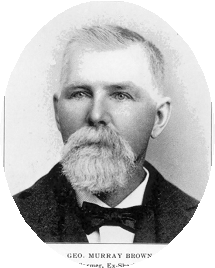
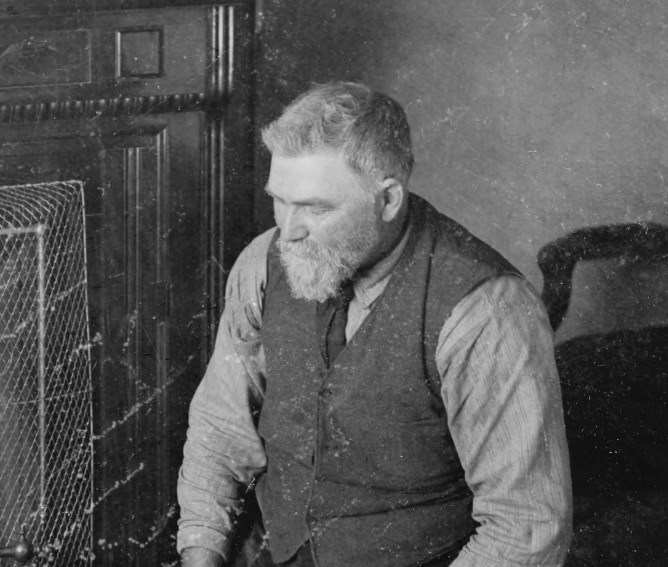
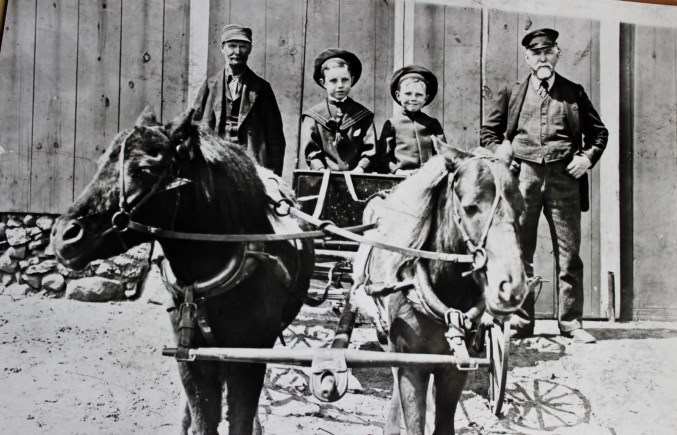
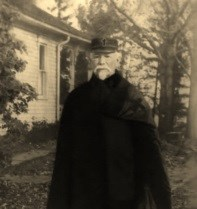
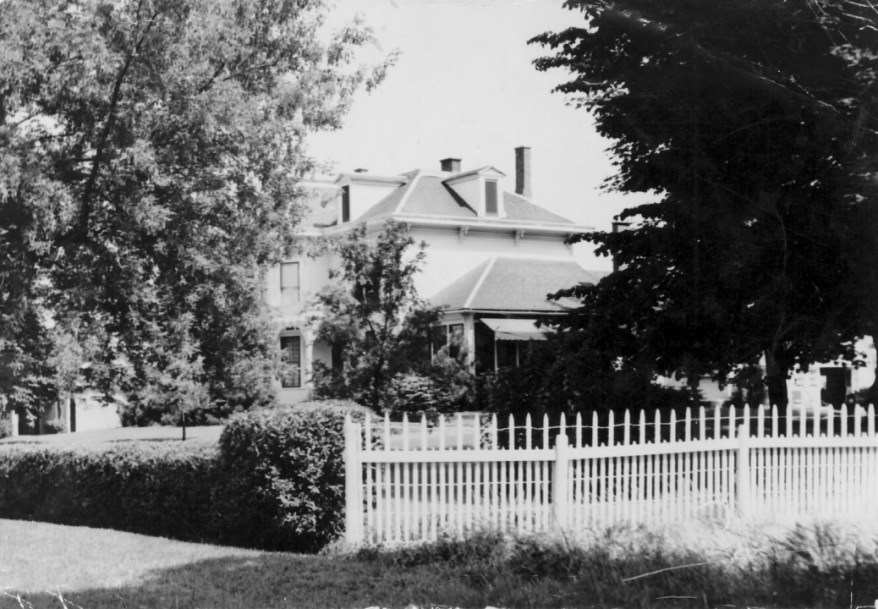






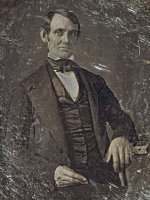
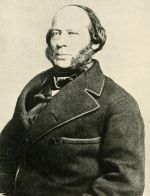
New! Comments
Have your say about what you just read! Leave me a comment in the box below.